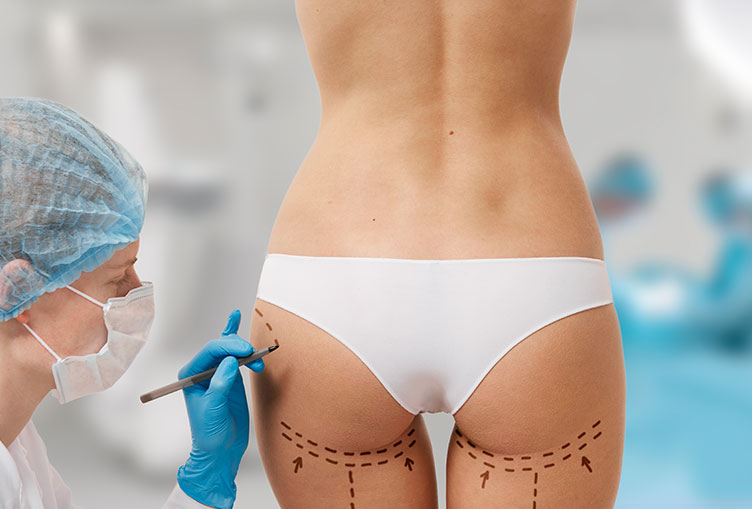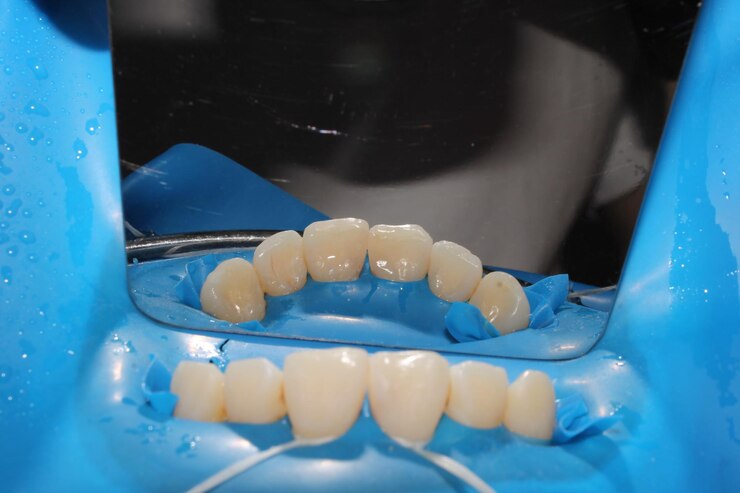3D printing is transforming dentistry by enabling precise, customized, and efficient solutions that were once limited by traditional manufacturing methods. The global
dental 3D printing market, valued at USD 2.48 billion in 2023, is expected to grow significantly, reaching USD 17.47 billion by 2032, with a staggering CAGR of 24.20%. This explosive growth is driven by advancements in 3D printing technologies and their applications across various dental fields. In this blog, we will delve into the market dynamics, technology, key players, and forecasted trends shaping the future of dental 3D printing.
Market Dynamics: What’s Driving the Growth of Dental 3D Printing?
The dental 3D printing market is fueled by several critical growth drivers, along with some challenges and exciting opportunities.
Growth Drivers
- Technological Advancements: Innovations in 3D printing technology—like improved materials, faster printing speeds, and better precision—have made it easier for dental professionals to adopt these solutions.
- Demand for Customization: Patients increasingly seek personalized dental solutions, such as implants and aligners, which can be achieved with 3D printing at lower costs.
- Digital Dentistry Boom: The adoption of digital tools and workflows in dentistry has surged, making 3D printing an essential tool in dental practices around the world.
Challenges and Restraints
- High Initial Investment: The cost of 3D printing equipment, materials, and maintenance can be a barrier for smaller dental practices.
- Regulatory Hurdles: Different countries have varying standards and regulations for dental equipment, which can delay product approvals and market entry.
Opportunities
- Emerging Markets: Countries in Asia and Latin America are investing heavily in healthcare infrastructure, presenting new opportunities for dental 3D printing.
- AI Integration: Combining AI with 3D printing could streamline workflows and improve accuracy, making dental procedures faster and more efficient.
Technology Behind Dental 3D Printing: Materials and Methods
Understanding the technology is essential to grasp the impact and potential of dental 3D printing.
Material Innovations
3D printing in dentistry uses specialized materials such as biocompatible resins, which are safe for use in the human body. Recent advancements have expanded the range of materials, including hybrid resins and new composites that are durable and aesthetic.
Key 3D Printing Technologies
- Stereolithography (SLA): Known for high precision and detail, SLA is ideal for creating dental models and clear aligners.
- Digital Light Processing (DLP): DLP uses light to cure resin, offering fast production times and detailed results, especially useful for producing molds and orthodontic aligners.
- Selective Laser Sintering (SLS): SLS is known for creating strong, durable parts by fusing powdered materials, though it is less commonly used in dentistry.
Applications of 3D Printing in Dentistry
3D printing has revolutionized several key dental applications, each improving efficiency and precision.
- Orthodontics: Clear aligners and retainers are increasingly produced with 3D printers, offering patients faster turnaround times and more affordable custom solutions.
- Implantology: Customized dental implants and crowns can now be printed, reducing the time and cost involved in producing accurate prosthetics.
- Prosthodontics: From dentures to fixed bridges, 3D printing allows for the creation of highly accurate and aesthetic prosthetic devices.
- Surgical Guides and Models: Surgeons and dental professionals can now rely on 3D-printed models and guides for precise surgical planning, improving patient outcomes and reducing surgery time.
- Education and Training: Dental students and professionals use 3D-printed models to learn procedures and practice complex techniques before working on patients.
Regional Analysis: A Closer Look at Key Markets
The adoption and growth of dental 3D printing vary across regions, each with unique factors contributing to market trends.
- North America: With a strong presence of leading 3D printing companies and high healthcare standards, North America is a prominent market for dental 3D printing. The U.S. alone drives significant demand, given its focus on advanced healthcare.
- Europe: Countries like Germany, the UK, and France are also embracing digital dentistry, driven by supportive government policies and a high demand for cosmetic dentistry.
- Asia-Pacific: Emerging markets like China, India, and Southeast Asia show immense potential due to investments in healthcare infrastructure and the growing dental industry.
- Rest of the World: Latin America, the Middle East, and Africa are gradually adopting dental 3D printing technologies, focusing on affordability and accessibility.
Key Players: Leaders Shaping the Dental 3D Printing Market
Several companies lead the charge in dental 3D printing, each contributing innovations and competitive strategies.
- 3D Systems, Inc.: Based in Rock Hill, South Carolina, 3D Systems offers a broad portfolio of 3D printing solutions and is known for its advanced materials and software.
- Stratasys Ltd.: This American-Israeli company excels in 3D printing solutions tailored for dental applications, including models for aligners and implants.
- Roland DGA Corporation: Known for its innovative approach, Roland focuses on improving workflow efficiency for dental applications with advanced software.
- Dentsply Sirona: With a global footprint, Dentsply Sirona leads in providing comprehensive 3D printing solutions for various dental applications, from prosthetics to surgical guides.
- Other Notable Players: Institut Straumann AG, Formlabs Inc., Prodways Tech, and Planmeca also play critical roles in advancing dental 3D printing.
Future Trends: What Lies Ahead for Dental 3D Printing?
The dental 3D printing market is on the cusp of several exciting trends and innovations.
Projected Growth
With a CAGR of 24.20% through 2032, the market is poised for rapid expansion. Dental 3D printing will increasingly become a standard practice as technology becomes more affordable and accessible.
Emerging Trends
- AI-Powered 3D Printing: AI has the potential to streamline workflows, automate design processes, and reduce errors, creating highly efficient and reliable printing solutions.
- Eco-Friendly Printing Materials: The industry is exploring sustainable and biodegradable materials to meet environmental standards without compromising quality.
- COVID-19 Impact and Digital Transformation: The pandemic accelerated digital dentistry adoption, encouraging more practices to integrate 3D printing into their workflows.
Investment Opportunities and Market Entry Strategies
The dental 3D printing market presents substantial opportunities for investors and new entrants.
- Investment Insights: Given the market’s growth trajectory, investment in dental 3D printing technologies is likely to yield high returns.
- Market Entry Strategies: For new entrants, strategies such as differentiating products, establishing partnerships with dental clinics, and focusing on affordable yet innovative solutions can help capture market share.
Frequently Asked Questions (FAQ)
1. What is the current value of the global dental 3D printing market?
The global dental 3D printing market was valued at USD 2.48 billion in 2023 and is expected to grow significantly at a CAGR of 24.20%, reaching USD 17.47 billion by 2032.
2. What are the primary factors driving the growth of the dental 3D printing market?
The market’s growth is driven by technological advancements in 3D printing, the rising demand for customized dental solutions, increasing adoption of digital dentistry, and growing awareness about 3D printing’s benefits in improving efficiency and reducing treatment costs.
3. Which 3D printing technologies are commonly used in the dental industry?
Common technologies include:
- Stereolithography (SLA): Known for its precision, suitable for creating models and aligners.
- Digital Light Processing (DLP): Fast production times, ideal for molds and orthodontic applications.
- Fused Deposition Modeling (FDM): Cost-effective but less precise, often used for basic prototypes.
- Selective Laser Sintering (SLS): Produces strong and durable parts, though less common in dental applications.
4. What dental applications benefit from 3D printing?
Dental 3D printing is used in:
- Orthodontics: For producing clear aligners and retainers.
- Implantology: For creating customized dental implants and crowns.
- Prosthodontics: For dentures and bridges.
- Surgical Guides and Models: For preoperative planning.
- Dental Education: For hands-on practice and training models.
Frequently Asked Questions (FAQ)
1. What is the current value of the global dental 3D printing market?
The global dental 3D printing market was valued at USD 2.48 billion in 2023 and is expected to grow significantly at a CAGR of 24.20%, reaching USD 17.47 billion by 2032.
2. What are the primary factors driving the growth of the dental 3D printing market?
The market’s growth is driven by technological advancements in 3D printing, the rising demand for customized dental solutions, increasing adoption of digital dentistry, and growing awareness about 3D printing’s benefits in improving efficiency and reducing treatment costs.
3. Which 3D printing technologies are commonly used in the dental industry?
Common technologies include:
- Stereolithography (SLA): Known for its precision, suitable for creating models and aligners.
- Digital Light Processing (DLP): Fast production times, ideal for molds and orthodontic applications.
- Fused Deposition Modeling (FDM): Cost-effective but less precise, often used for basic prototypes.
- Selective Laser Sintering (SLS): Produces strong and durable parts, though less common in dental applications.
4. What dental applications benefit from 3D printing?
Dental 3D printing is used in:
- Orthodontics: For producing clear aligners and retainers.
- Implantology: For creating customized dental implants and crowns.
- Prosthodontics: For dentures and bridges.
- Surgical Guides and Models: For preoperative planning.
- Dental Education: For hands-on practice and training models.
5. Who are the leading players in the dental 3D printing market?
Major companies include:
- 3D Systems, Inc.
- Stratasys Ltd.
- Roland DGA Corporation
- Dentsply Sirona
- Institut Straumann AG
- Formlabs Inc.
- Prodways Tech
- Planmeca
6. What are some challenges faced by the dental 3D printing industry?
Key challenges include the high cost of 3D printing equipment and materials, regulatory hurdles across regions, and the need for specialized training among dental professionals.




